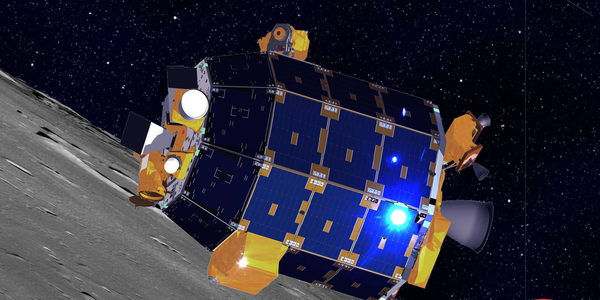NASA Will Intentionally Crash A Probe Into The Moon

Nothing really lasts forever, not even in space. Crafts that land on extraterrestrial surfaces, satellites and even telescopes shot into the solar system to collect data eventually quit functioning. As humans, we are constantly striving for more information and are making more tools that can help us explore. So what happens to the tools after they become obsolete and their mission ends?
According to The Space Reporter , one space probe named LADEE ( Lunar Atmosphere and Dust Environment Explorer ), which has been orbiting the moon since November 6th, 2013 will soon find out exactly what happens when it gets its pink slip. The probe is set to crash into the lunar surface on April 21 after a one hundred day study around the moon. NASA scientists will adjust its orbit so it moves much closer to the moon, and as its fuel reserves completely deplete, it will naturally crash into the moon. LADEE has collected over 700,000 measurements during its mission of the lunar atmosphere, taking readings during both night and day.
The LADEE probe will have one final test of its endurance when a full lunar eclipse happens on April 15th, which will be visible from earth. It will be exposed to extreme and bitterly cold temperatures that may destroy its electrical and flight systems before it can crash on its own from fuel loss later in the month. If the probe happens to survive the harsh conditions, it will keep sending data back to Earth until it slams into the moon's surface and ultimately goes quiet. Humans are pretty obsessed with the moon so eyes even outside of the NASA offices will be on LADEE's last transmissions.
It's expected that LADEE's extensive data will help scientists discover the answers behind a strange phenomenon viewed during Apollo missions. The lunar horizon seems to have a glow before the sun rises each day. Scientists hope that the probe's data can help confirm that the lunar dust is fused with electric charges caused by the sun's rays or perhaps offer another explanation for the glow. They also want to use the atmospheric data to help better understand planets and solar objects with similar atmospheres, like Mercury. We salute you, LADEE for being another part in our future discoveries in space and we can't wait to learn more from your mission.
Check out the video below to see LADEE's early moments from NASA's Youtube page as it launched into into space.
CINEMABLEND NEWSLETTER
Your Daily Blend of Entertainment News

'Rife With Erroneous Judicial Rulings.' That '70s Show Vet Danny Masterson's Lawyers Filed Appeal For Actor's Rape Convictions

After Rumors Swirled Around The Batman Part II’s Production Start, Matt Reeves Provided An Update That Has Me Relieved

‘They Can Reminisce About What Island They Were On Last Year.’ What Diddy’s Christmas Will Look Like Behind Bars This Year
Most Popular







